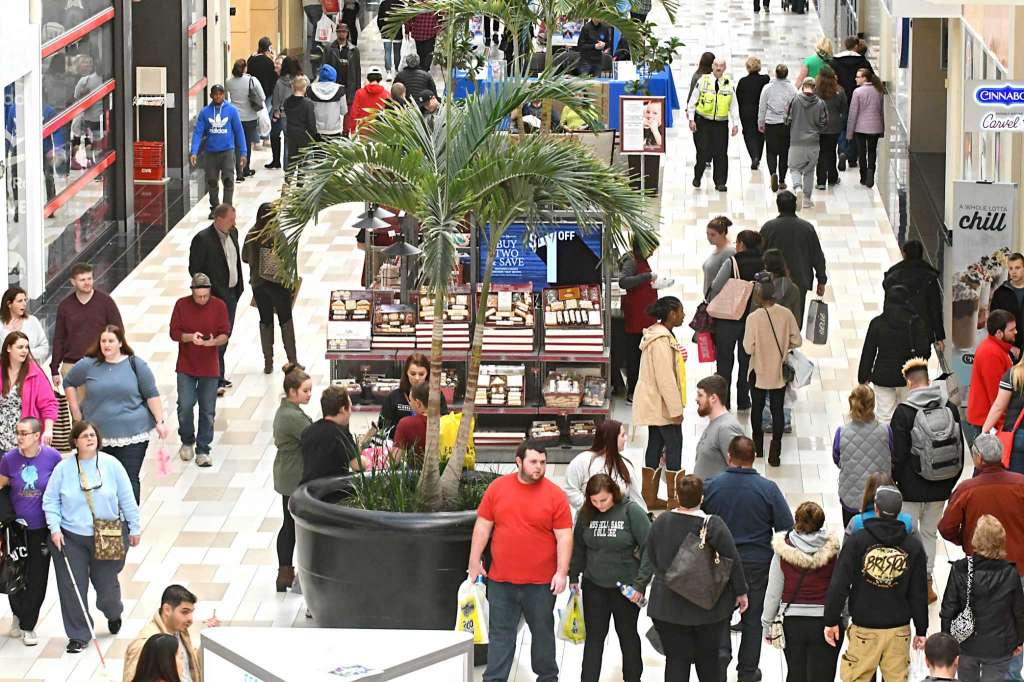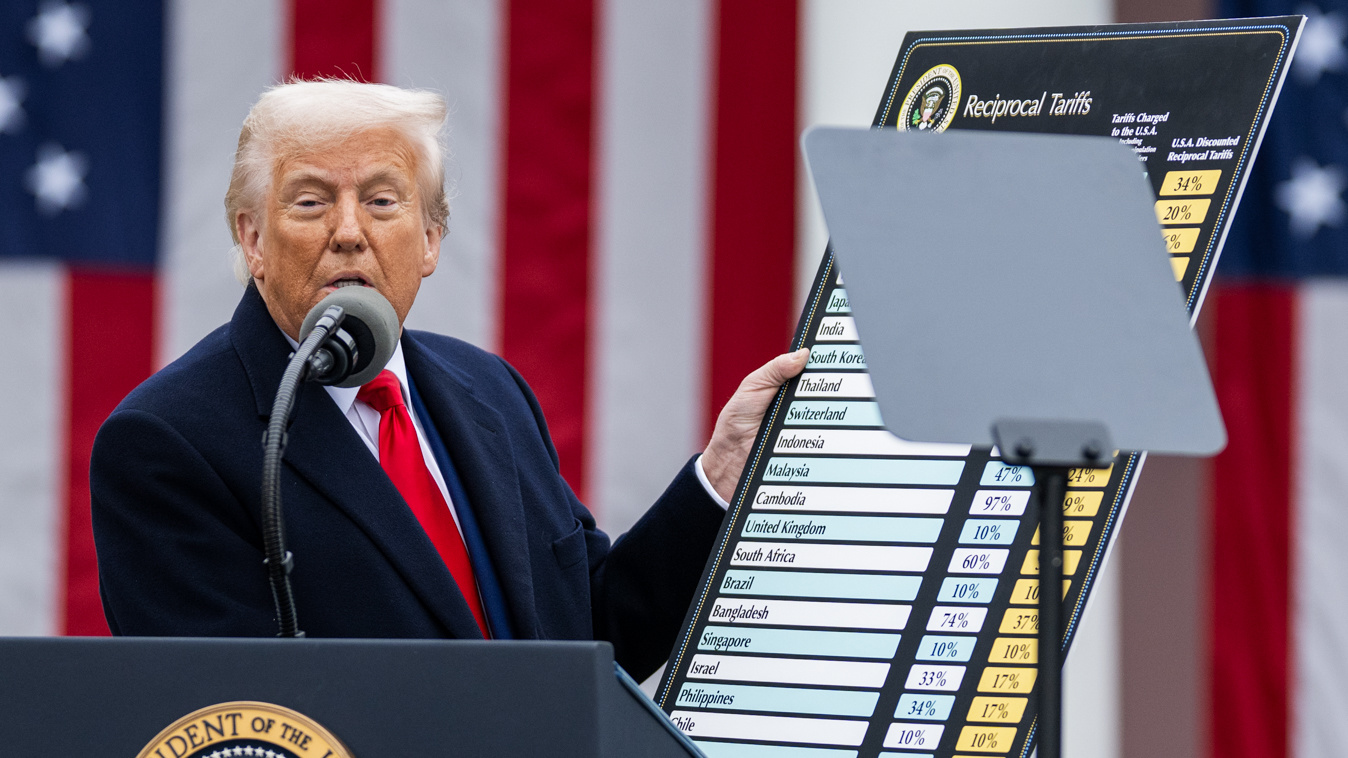It’s now eight months after the first set of Trump administration tariffs went into effect, and so far the much-feared economic costs of tariffs have yet to appear.
In most cases, consumers have not seen any increases in the pricesof goods containing tariffed products because the costs have been absorbed by producers in the supply chain; while in a few cases tariffs have led to price increases in consumer goods but sales of those goods have continued to be strong. In other words, higher prices have simply not impacted demand. The economy continues to grow at a robust rate.
Even before the tariffs went into effect, the Chicken Littles of the business world and the economics profession began predicting that tariffs would drive up inflation, cause a recession, and pretty much make the sky fall in. Yet the tariffed industries and their customers are growing and there is little sign of increased inflation. And oh yes, there are also some signs that tariffs are beginning to achieve their key objective of stimulating the replacement of China as a production site. I’ll return to that last point in a moment.
The latest government data shows overall consumer price inflation remains low. The key measure of inflation, often called core inflation, came in at just 2.1 percent (see Figure 1) in October, pretty much spot on target for the Federal Reserve as it manages the nation’s monetary policy. Figure 2 shows that the main upward pressure on inflation comes from energy and the rising cost of housing. Tariffs began to come into effect in March and have had no noticeable effect on the inflation picture.
The upward pressure on inflation is from oil-related products, such as gasoline, up 16 percent year-on-year. Products like automobiles or beer in cans show price increases below the rate of overall consumer inflation.

Figure 1: Core inflation (defined as Consumer Inflation in All Items Except Food and Energy) was at 2.1% in October and has not reached 2.5% since 2008.
| Broad Consumer Inflation Oct. 2018 & Selected Sub-Sectors | ||
| Item | Percent of Total Spending | Inflation Rate, Oct. 2017-Oct 2018 |
| All Items | 100% | 2.5% |
| Food | 13.2% | 1.2% |
| Energy | 8.0% | 8.9% |
| Including: Gasoline | 4.3% | 16.1% |
| Shelter | 32.9% | 3.2% |
| Apparel | 3.1% | -0.4% |
| New Vehicles | 3.7% | 0.5% |
| Medical Care Services | 6.9% | 1.9% |
Figure 2: Major Contributors to Consumer Inflation include food, energy and shelter. Source: BLS
Figure 3 shows the key data on the major tariffs levied by the Trump administration this year. The first tariffs hit the solar industry with a 30 percent levy on solar panels and modules imported from anywhere outside the US. That 30 percent figure makes these tariffs the highest percentage levy of any Trump tariffs so far. Last year, the Solar Energy Industries Association (SEIA) forecast a big downturn, with up to 23,000 job losses, if these tariffs were enacted.
| Major US Tariffs 2018 | |||||
| Date in Effect | Avg. Rate | Value of Imports ($B) | Sector/Product | Country of Origin | |
| Feb. 7 | 30% | $8.5B | Solar Panels | Multiple | |
| Feb. 7 | 20% | $1.8B | Washing Machines | Multiple | |
| Mar. 23/ June 1 | 25% | $23.4B | Steel | Multiple | |
| Mar. 23/ June 1 | 10% | $16.4B | Aluminum | Multiple | |
| Jul. 6 | 25% | $34B | Variety (Tranche 1) | China | |
| 25% | $16B | Variety (Tranche 2) | China | ||
| Sept. 23 | 10% | $200B | Variety (Tranche 3) | China | |
| included in tranche 3 | $9B (est) | Luggage | China | ||
| included in tranche 3 | $20B (est) | Networking gear | China | ||
Figure 3. Major tariffs levied this year by Trump Administration. Source: Dept. of Commerce, Wells Fargo Economics, CPA Research.
Yet the solar industry has grown in the months since the tariff went into effect!
Solar Industry: Prices Down, Demand Up
The reason is that solar module prices have continued to fall, despite the 30 percent tariff. China and other exporters have eaten the cost of the US tariff. It seems likely that the Chinese government is making up some of the cost, with large Chinese solar companies taking up the rest of it as a reduction in profit. US consumers and businesses are not paying the cost of the solar tariff.
The solar industry is booming. Here’s how the SEIA and its partner analyst firm GTM Research described the state of the industry in Q2, the first full quarter when the tariff was in effect, in a report published on September 13th: “Remarkably, procurement of US utility solar has exploded over the first half of 2018 with a total of 8.5 GW (gigawatts) of projects announced…As we move towards 2019 we expect to see continued procurement growth…while GTM has always expected module prices to drop on a year-over-year basis, the decline has been faster than anticipated.”
Further and more specific evidence of solar industry strength comes from individual company reports. In a Nov. 7th conference call discussing Q3 results, Bob Komin, Chief Financial Officer of the largest US provider of solar power Sunrun, told investors that installation costs (including modules) fell by 20 cents or 7 percent compared with a year earlier. or “Blended installation cost per watt…improved by $0.20 year-over-year to $2.52 per watt.” CEO Lynn Jurich told investors: “Demand is accelerating and we expect Q4’s growth rate to increase above 30 percent year-over-year…we think that acceleration will continue into next year…we’ve never liked our strategic position more than where we sit today.”
Sunrun’s position is not unique. Vivint Solar, another major publicly-quoted solar installer, reported Q3 revenue up 4% at $77.8 million, and megawatts installed up 17% to 54.3 MW. Vivint gave investors guidance that Q4 installations would rise 22 percent over Q4 2017’s installations.
Washing Machines: Prices Up, Demand Up
The washing machine industry has seen a different experience. After falling by 5 percent in 2017 and another couple of points in early 2018, washing machine prices suddenly reversed course and rose by some 15 percent in the spring. In October, washing machine prices were up some 10 percent on the year-earlier level.
In the first half of 2018, market leader and the largest US manufacturer Whirlpool raised prices about 5 percent. On Oct. 25th, Whirlpool reported its Q3 results and revealed that its North American unit sales rose in the quarter. Consumers accepted the Whirlpool price increase. In the words of CFO James Peters: “Net sales increased 5 percent despite an industry demand decline of nearly 2 percent in the quarter.”
It’s likely that imported washing machines lost market share to Whirlpool. Tariff critics have repeatedly warned that tariffs would lead to price increases which would in turn lead to a collapse in sales. In washing machines, at this early stage, the tariffs appear to have led to price increases at the largest US manufacturer and increasing sales and increased market share. This is not a surprise, Whirlpool CEO Marc Bitzer, told investors on an Oct. 25th conference call. Consumers tend not to react to price increases, especially when they are small. “I would say on a full-year basis, consumer prices do not necessarily impact consumer demand in a strong way,” Bitzer explained.
Tariff critics overestimate the importance of price in two ways. First, they tend to rely on undergraduate economics, which teaches that demand always falls when price rises (the famous downward-sloping demand curve). This is true in theory, but real-world experience shows that in an oligopolistic economy, when all the producers in a market raise price together, the effects are far smaller than economic theory would predict.
The second fallacy is a macroeconomic fallacy. Based on US experience in the late 1960s and 1970s, when inflation appeared to be out of control, surges in inflation often led consumers to rein in their total spending and increase saving because they expected economic hardship to follow. In the 1979-81 period Fed chairman Paul Volcker purged inflation from the US economy with extremely high interest rates, and throughout the 21st century, we have experienced inflation mostly lower than the Fed would like. Consumers today appear unworried about inflation. In today’s bullish economy, with wages rising slightly more than inflation, job numbers growing, and US factory production rising, consumers are willing to spend. So price increases, instead of being seen as a warning that the economy is out of control, are seen as just another random event in an economy full of random events. We provide more examples of this reaction to price increases below.
Steel and Aluminum: Prices Up, Demand Up, Profits Up
Steel and aluminum prices have both risen significantly since the tariffs went into effect earlier this year. But according to the price data from the Bureau of Labor Statistics (BLS), few if any consumers markets have felt much impact. BLS data shows that in October, steel prices were up 18.2 percent over the year-earlier level while the figure for aluminum was 8.2 percent. Yet prices for new automobiles, one of the most visible end-markets for steel, rose just 0.5 percent in the year to October. On the aluminum side, beer cans attracted attention earlier this year when some beer producers complained their costs would rise. Yet as of October, the price index for beer consumed at home has risen just 1.6 percent over the previous October, well below the 2.5 percent rate of consumer inflation.
At each stage of the production process, intermediate producers appear to be absorbing some of the cost increase, with the result that the consumer is seeing little inflation as a result of the metals tariff. For example, in the steel-using sectors of the economy, structural and architectural metal products (used in construction) saw year-on-year inflation of 9.3 percent, while foundry and forge shop products (intermediate steel products used by downstream industries including machinery and auto manufacture) saw inflation of just 2.4 percent in October. By the time intermediate steel products find their way to final incorporation into cars, trucks, or airplanes, the metal cost disappears into the complexity of thousands of parts, all of whose prices move from quarter to quarter. The more intermediate stages there are, the more the costs are diffused or absorbed along the way.
Simplistic commentators or those with an anti-tariff bias have suggested that the raw price increases must inevitably find their way into prices of end-products. But in a complex economy, there are so many moving parts within a business that one-time price changes often “disappear,” especially when the economy is growing. One illustration of this comes from construction maker Caterpillar’s Q3 report. Caterpillar said in its Oct. 23rdreport that tariffs increased costs in the quarter by about $40 billion. Yet it reported an 18% increase in sales to $13.5 billion, and operating profit up a whopping 41 percent to $2.1 billion, due to a combination of increased worldwide demand for construction machinery and modest price increases in the 1 percent to 4 percent range. It was, said CEO Jim Umpleby, the best third-quarter profit in the company’s 93-year history. On the investor conference call, Umpleby said the company is optimistic that 2019 results will be even better than 2018. Asked about the impact of the impending 25 percent tariffs on Chinese imports, he said: “The impact would be quite minor in the bigger scheme of things for Caterpillar’s results.”
China Tariffs: Prices Passed on, Demand Rising
The 10 percent tariffs that went into effect on September 24thon $200 billion of China imports span a wide and diverse set of products. It is still early to identify the impact of those tariffs on prices or sales of the affected goods. We identified two significant categories of goods, luggage and networking equipment, covered by the so-called “third tranche” of tariffs of Sept. 24th. A quick look at each shows that industry leaders expect the impact to be modest.
Luggage industry leader Samsonite reported that its Q3 worldwide revenue rose 3.2 percent to $945 million. In its Nov 13th conference call, Samsonite said it expects to pass on much of the 10 percent tariff on Chinese imports, so its prices to distributors and retailers will rise about 7 percent. Yet CEO Kyle Gendreau said Samsonite expects North American sales next year to rise in the 3 percent to 5 percent range. If the tariff does go up by another 15 points to 25 percent in January, that could trigger another 7 percent price increase, he added. Even then, he expects Samsonite’s North American business to continue growing unless there is a major change in consumer sentiment. Consumer sentiment, the general outlook for the economy, the level of international travel, and how successful Samsonite is at repositioning some of its individual brands which include American Tourister and Tumi as well as the core Samsonite brand, are more important to the business than any individual price. As Gendreau put it: “It’s much more to do with what’s happening with the macro in the US.”
Cisco Systems could not be more different from Samsonite. It is a $50 billion/year giant in networking gear and sells mostly to business, especially Fortune 500 companies. The third tranche 10 percent tariffs affected all its products made in China for the final month of its fiscal quarter, which ended Oct. 27th. On Nov. 13th, Cisco reported revenue for that quarter up 8 percent to $13.1 billion, with earnings per share up 23 percent to 75 cents a share. Analysts called it Cisco’s best quarter in four years. On the conference call, CEO Chuck Robbins said: “the tariffs were immaterial to us…from a demand perspective when we implemented the pricing changes…we saw absolutely no demand change from the week before to the week after…I can just tell you personally I haven’t had one conversation with any customer around the tariffs at this point.”
Cisco joins with other tech companies in lobbying against the tariffs in public and would of course rather see them repealed. But in speaking frankly to investors, CEO Robbins readily admits that the impact of a 10 percent tariff on the business is trivial. The reasons, as he explained on the conference call, are that businesses are wrestling with over 100 different software applications in their networks and dozens of other issues that go into managing a corporate network, For most customers, a 10 percent increase in the price of a router is a trivial detail, especially when Cisco’s direct competitors also do much of their manufacturing in China and will be passing on similar price increases.
Targeting China
There is a strategic difference with the China tariff; since these tariffs are levied on only one nation, there is the option of moving production out of China. According to Gendreau at Samsonite: “When we started the year 2018 we were sourcing probably around 95 percent of our products in the US from China. By the time we get into our stride in 2019, I think that’s going to shift to roughly 80 percent.” A recent survey by the American Chamber of Commerce in South China found that more than 70 percent of US companies operating in the region are considering delaying further investment in China or relocating some production out of the country.
Conclusion
Inflation remains low in the US. Even where tariffs are leading to price increases, demand and sales remain strong. This means tariffs stimulate domestic production without negative consequences on demand. Meanwhile, industries like metals and solar panels are rebuilding. And US industry is beginning to diversify away from over-dependence on Chinese production.
Challenges remain. So far, China seems unwilling to compromise on trade issues. The US dollar has already risen some 6 percent this year and could rise further, undoing many of the economic benefits of the tariffs. While multinationals are looking at diversifying production away from China, most of them appear to be eyeing Southeast Asia as a location. More needs to be done to re-establish the US as a great site for manufacturing.
But the tariffs are a step in the right direction. It would be hard to think of any new economic policy introduced in the last 30 years that is delivering positive results so rapidly and broadly as the tariff policies of 2018.












